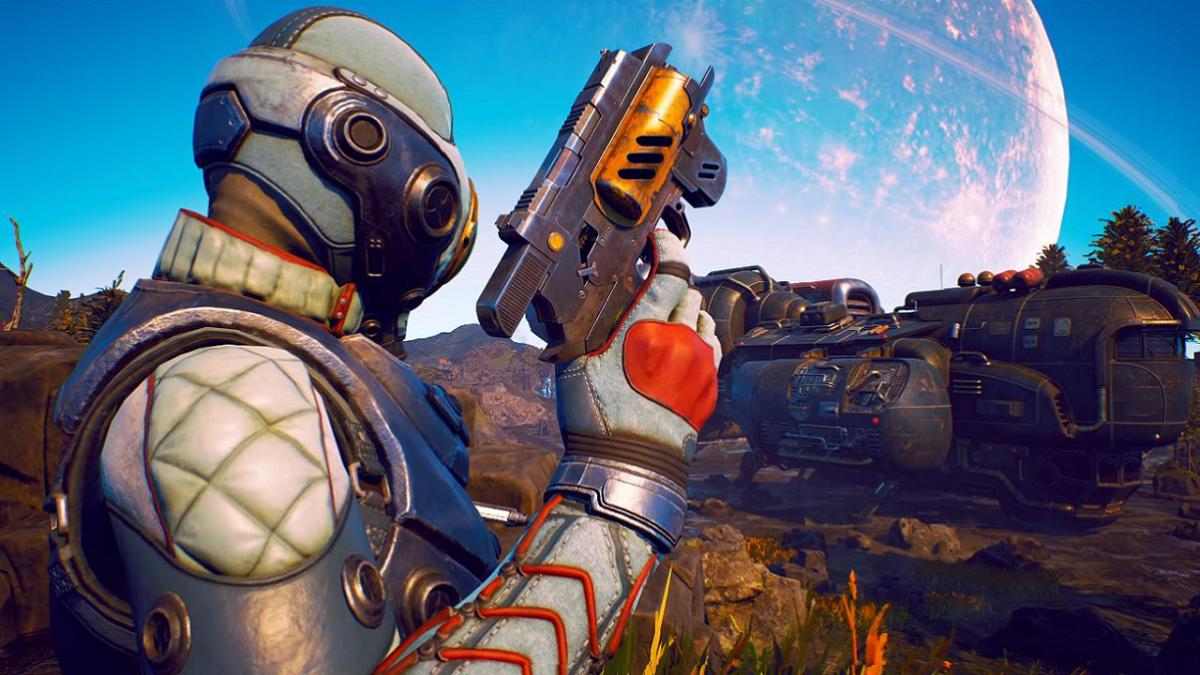It’s Big on Player Choice, But Shorter Than You Might Expect

If you’ve played RPGs like Fallout 3 you know how huge the experience is on player choice, and The Outer Worlds is the same way, especially considering it comes from the makers of Fallout New Vegas.
The Outer Worlds casts you as a lone adventurer in the Halcyon Colony, a colony run by mega-corporations and The Board. Each and every quest in the game has some degree of choice in it, and that’s not just the choice you make in dialogue.
There are multiple ways to solve quests or make it through areas, and the game really wants the experience to be unique to each player.
The story can diverge in drastically different ways depending on which companies or groups you side with, and what your reputation with them is.
Because of this, if you really want to see every aspect of The Outer World’s story, you’ll need to play through at least twice. The good news, however, is that the game isn’t nearly as long as something like Fallout 3.
The Outer World’s main story can be completed in roughly 10-12 hours, with all the side content bumping that up to somewhere in the 30 hour range. Luckily, that choice aspect provides enough variation to keep things interesting.
There’s No “Right” Way to Play

When you first start up The Outer Worlds you’ll have to put points in a variety of different stats and perks. These make up things like your skill with handguns, your hacking ability, your medical knowledge, etc.
It can all be pretty overwhelming but don’t worry, there’s no right and wrong way to play the game. You can invest in any stats you want, or spread things out evenly.
The great thing about the Outer World’s quest design is that it provides options, letting you tackle quest and objectives in more than one way. This applies to dialogue as well.
For example in a conversation you might be able to open a new option if your Persuade skill is high enough, but alternatively you might have another option if your Medical skill is high. The game almost always provides more than one way to get things done, meaning it encourages you to play however you want.
Whether it’s a melee-focused character or a science wiz, build the one you feel like.
It’s Not Open World, But Still Exploration Heavy

Although it shares a lot in common with other open world RPGs, The Outer Worlds technically isn’t an open world game. There’s no massive map you’ll be traversing, but there’s still quite a bit of exploration.
Instead, the game is split up into a number of zones that function as different planets or areas in the Halcyon Colony. These maps generally aren’t terribly large, but the space is used well.
Areas are littered with buildings to explore, items to find, and enemies to battle, and it’s much more than just empty space.
You’ll be scavenging plenty of loot and consumables, just like in Fallout, but you won’t have to trek across a wasteland for ten minutes in order to do so.
If that level of vast exploration is something you like, temper your expectations a bit with The Outer Worlds, but know that a similar experience is still there.
You Don’t Have to Be Great at Shooters to Play It

The Outer Worlds is a first-person shooter through and through as far as combat goes, but you don’t necessarily have to have crazy skills in the genre in order to play it. There are a number of difficulty options to choose from, and evem tje normal difficulty tones things back to a decent degree, and you can scale it back even more if you want.
The role-playing elements really are at the core of the game, though, and those can be invested in to make combat flow differently than a shooter. Companions help a lot on lower difficulties, and a system called Tactical Time Dilation helps add to the RPG feel.
This ability is mapped on R1 and slows down time to crawl, letting you aim and shoot faster than enemies. It’s not quite the same as VATS from Fallout, but it helps make things more accessible for players not well versed in shooters.
You can heavily invest skill points and perks in TTD as well, letting you use it more often and have it recharge quicker, if you want. Of course, if you want a challenging shooter you can still do that.
This is especially true with the Supernova difficulty, which requires you to manage things like sleep as your character becomes exhausted.
You Should Do All the Major Side Quests

We talked about player choice before, but one thing that bears talking about is the Outer World’s side quests and how important they actually are.
The journal separates quests into a number of categories; main quest, side quest, tasks, companion quests, etc. Although they’re labeled “side quests,” they’re surprisingly important to the story of The Outer Worlds, and “tasks” actually feel more in line with the usual idea of side quests.
Each side quest in the game deals with a conflict on the planet or area you’re in, and always forces you to make some tough decisions.
More importantly, however, the outcome of side quests determines the game’s ending, as well as how the final mission plays out.
If you beat the main story without them, you’re missing out on quite a bit of important context. So, at the very least, complete every side quest you can, but feel free to skip out on the others until later if you want.
For more on The Outer Worlds, check out our scored review or our thoughts on why the companion system in the game is so good.














Updated: Oct 23, 2019 04:13 pm